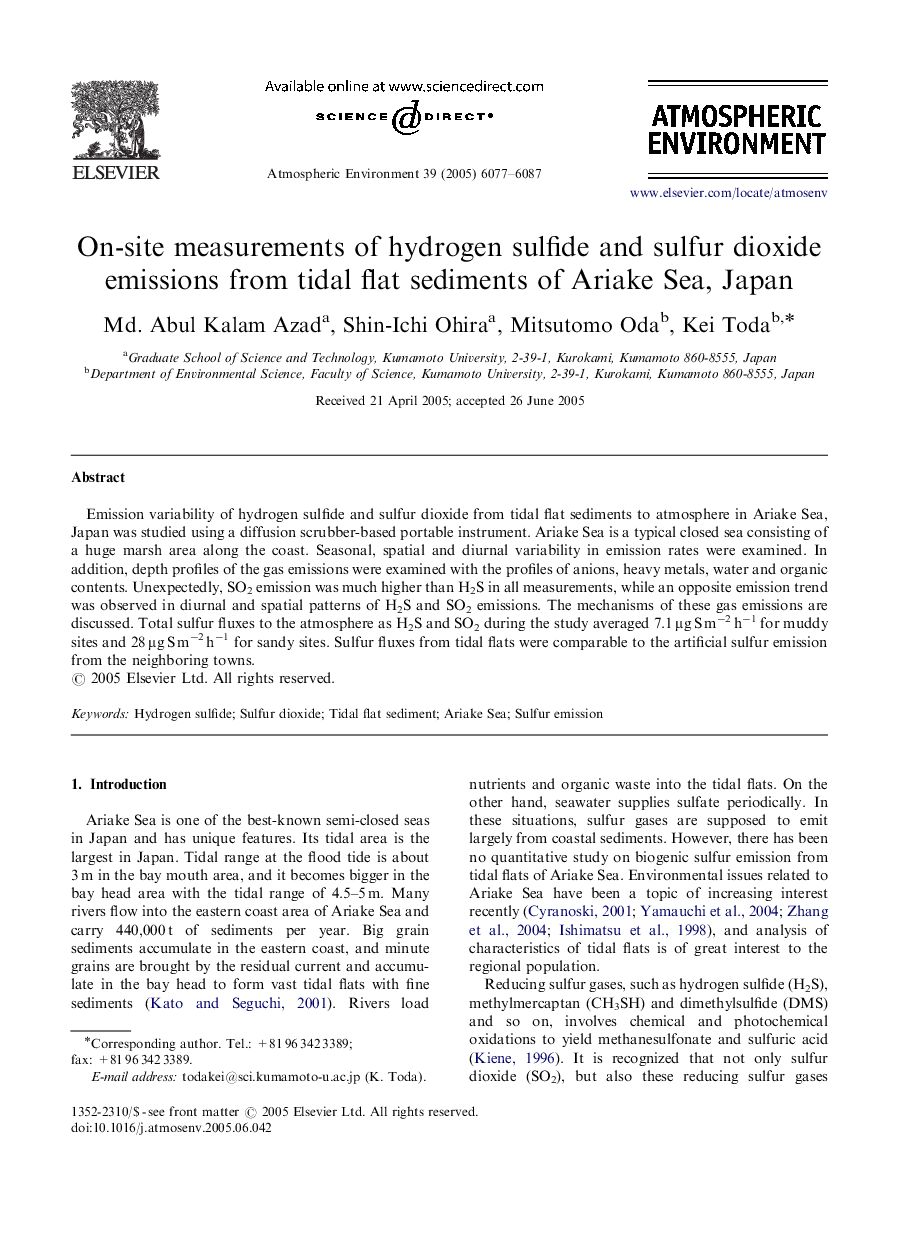| Article ID | Journal | Published Year | Pages | File Type |
|---|---|---|---|---|
| 4444622 | Atmospheric Environment | 2005 | 11 Pages |
Emission variability of hydrogen sulfide and sulfur dioxide from tidal flat sediments to atmosphere in Ariake Sea, Japan was studied using a diffusion scrubber-based portable instrument. Ariake Sea is a typical closed sea consisting of a huge marsh area along the coast. Seasonal, spatial and diurnal variability in emission rates were examined. In addition, depth profiles of the gas emissions were examined with the profiles of anions, heavy metals, water and organic contents. Unexpectedly, SO2 emission was much higher than H2S in all measurements, while an opposite emission trend was observed in diurnal and spatial patterns of H2S and SO2 emissions. The mechanisms of these gas emissions are discussed. Total sulfur fluxes to the atmosphere as H2S and SO2 during the study averaged 7.1 μg S m−2 h−1 for muddy sites and 28 μg S m−2 h−1 for sandy sites. Sulfur fluxes from tidal flats were comparable to the artificial sulfur emission from the neighboring towns.
